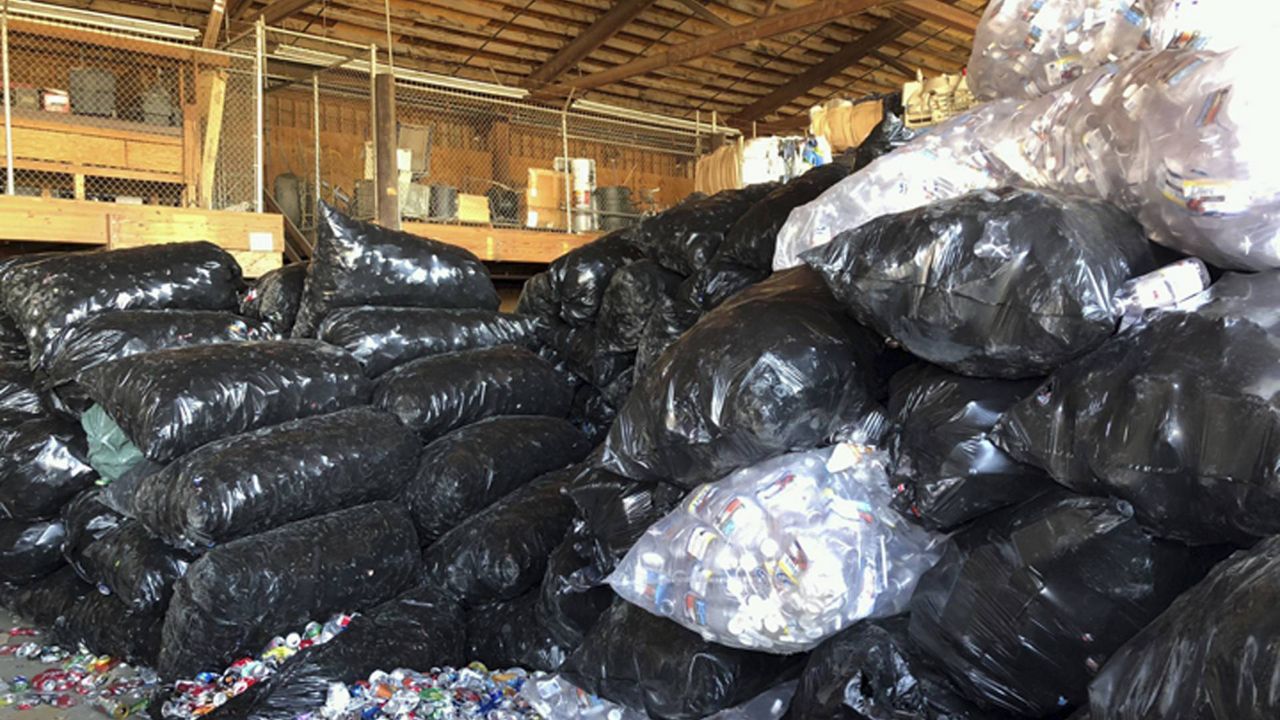California Gov. Gavin Newsom signed several bills into law Tuesday that are aimed at reducing plastic waste in the state, including one that will ban manufacturers from selling products with misleading recycling labels.
“California’s hallmark is solving problems through innovation, and we’re harnessing that spirit to reduce the waste filling our landfills and generating harmful pollutants driving the climate crisis,” Newsom said in a statement released Tuesday, after signing five bills into law.
Among the new laws that will take effect Jan. 1, 2022:
- AB 881, which helps the state accurately measure how much plastic is actually recycled and prohibits plastic waste exports to other countries being counted as "recycled"
- AB 1201, which updates labeling for compostable products
- AB 962, which makes it easier for brewers and other beverage producers to create reusable glass bottle systems to reduce the need for single-use beverage containers
- AB 1276 to reduce plastic foodware waste by giving takeout customers single-use foodware only when requested
- SB 343, which requires products to meet certain standards in order to be advertised or labeled as recyclable and prohibits manufacturers from using the chasing-arrows symbol on such items
“Consumers are being misled by the placement of the recycling symbol on items that aren’t actually recyclable under real world conditions,” said SB 343 author Sen. Ben Allen, D-Santa Monica, who chairs the Senate Committee on Environmental Quality. “By enforcing truth in labeling and empowering consumers to make informed decisions, this measure will reduce contamination in the recycling stream and improve the sorting process, which incidentally translates to big savings for ratepayers and local governments.”
A recent report from the Statewide Commission on Recycling Markets and Curbside Recycling found that consumers often interpret the "recycle" word and symbol as being accepted in curbside recycling, even when their true recyclability is low or non-existent.
SB 343 is designed to help consumers to identify which products are truly recyclable in California since many products marked with a recycling symbol can not be. In California, less than 15% of single-use plastic is recaptured, let alone transformed into something else, yet consumers continue to toss anything marked with the chasing-arrows recycling symbol into their blue bins.
Last month, Newsom announced a $15 billion climate package that included $270 million to support a circular economy and reduce waste. That package includes money to support a new office of innovation in recycling and remanufacturing within the state’s recycling agency, CalRecycle, with additional funds for composting, remanufacturing and recycling infrastructure.
The amount of waste Americans generate each year is increasing, yet the amount of that waste that is recycled continues to drop, according to the U.S. Environment Protection Agency. In 2018, Americans generated 292.4 million tons of waste, 32% of which was either composted or recycled.
Recycling rates, however, vary by material type. Just 27% of glass, 16% of paper packaging and 9% of plastics are recycled, according to the EPA.
All municipal recycling systems in the U.S. have been negatively affected by the so-called National Sword policy China enacted in January 2018, which banned the import of almost all plastics and other recyclable materials from foreign countries. Still, many waste utilities continue to accept plastics 3, 4, 6 and 7 in their recycling bins, even though they no longer have a market and are, for the most part, being landfilled.



